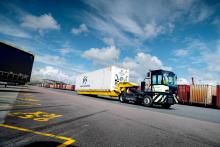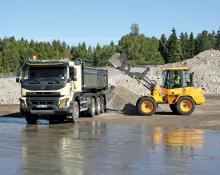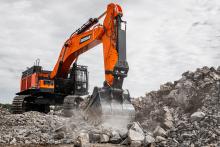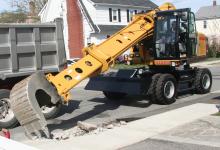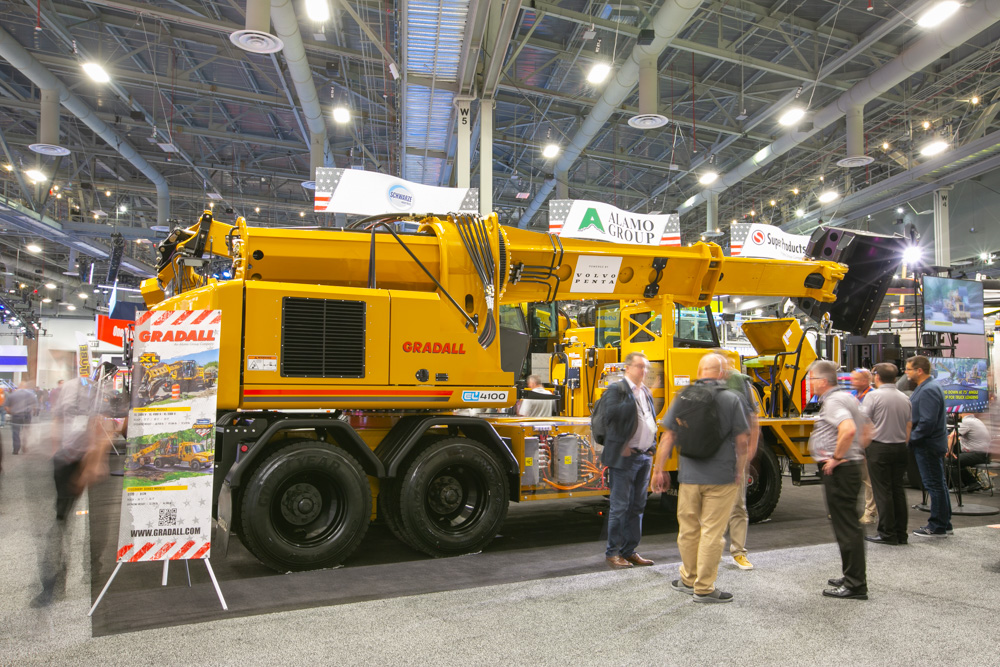
“With this machine, we can dig for at least two hours and drive about 60 miles,” Michael Norman, director of sales and marketing at Gradall, said of the EL41H4. The company believes it must develop a machine that can dig for eight hours and drive back-and-forth between jobsites.
Gradall expects to reach the hour and distance targets in the next few years. “Two to three years from now, a battery of the same size will last twice as long,” Norman said.
The company will also have an essentially separate power system for digging, which will help extend operation. “There will be lots of regeneration with that as well,” Norman said.
Unlike a traditional hydraulic excavator, Gradall’s highway-speed solution features a telescopic boom mounted next to a separate cab sitting to the rear of a road-going chassis. This enables the machine to be independently dispatched to many locations throughout the workday, rather than requiring a low loader for transport.
“That’s what we do,” Norman said. “It’s, ‘One man, one machine.’”
The concept machine is powered entirely by two Volvo Penta batteries, matched to the duty cycle of the excavator, which fit neatly into the existing engine bay. The electric driveline system from Volvo Penta also includes the complete high-voltage system — electric motors, converters, junction boxes and cabling.
Booth W41500


